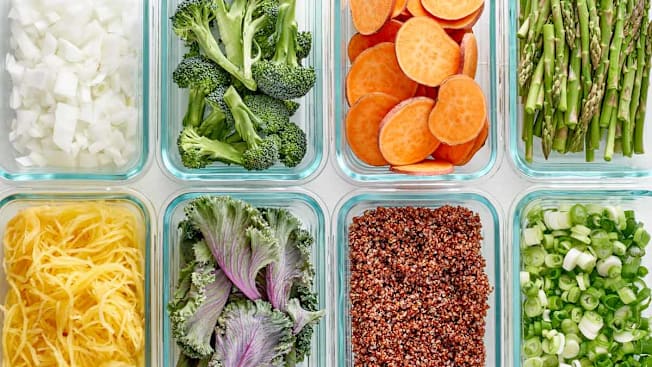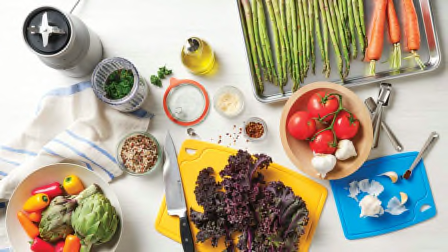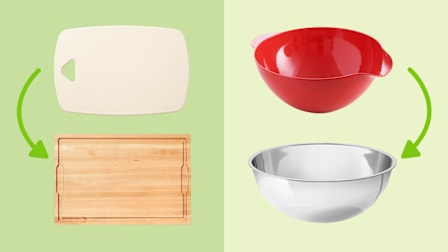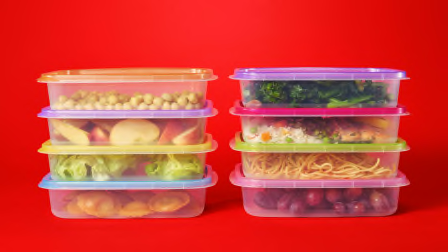4 Best Lab-Tested Food Storage Containers of 2026
In our water-slosh evaluation and 3-foot-high drop test, these food storage containers emerged mess-free and kept food fresh
When you shop through retailer links on our site, we may earn affiliate commissions. 100% of the fees we collect are used to support our nonprofit mission. Learn more.

Whether you’re stowing leftovers in the fridge or throwing lunch in your bag for the workday, you want a sturdy, tight-sealing container that keeps your food fresh. And as you’ve probably learned through some messy experiences, not every container is up to the task.
Best Food Storage Containers
The five models that rose to the top of our ratings proved to be durable, airtight, and leakproof in our tests. Most are versatile, too—they can be used in the fridge and freezer, and they’re dishwasher-safe (though the lids might not be). A few can be microwaved or even put in the oven.
Best Stainless Steel Food Storage Containers
Stainless steel models are your best bet if you want a sleek container that’s lighter and more portable than glass. These also tend to nest more compactly, so they take up less room on your shelves when you’re not using them. They’re often oven-safe. But, of course, you should never put these in a microwave.
Best Glass Food Storage Containers
With these handy see-through containers, you’ll know at a glance what you’ve got stored in the fridge. Glass also lets you microwave the container and eat food right from it. But not all glass container lids are microwave-safe, so be sure to check the manufacturer’s instructions.
How CR Tests Food Storage Containers
In our labs, we test food storage containers for their ability to keep food fresh, their durability, the quality of the seal between the lid and container, and their ease of use.
Freshness: Deitrick and his team of testers fill each container with the same number of PopCorners chips (the kettle corn flavor, if you’re curious), seal it up, and let it sit. After two weeks, a panel of three judges evaluates the chips for crispness and flavor, comparing them to those from a fresh bag of PopCorners. The containers with chips that remain essentially unchanged receive the highest score for the storage test.
Durability: Deitrick fills containers with dried black beans and subjects each model to a series of two “drop” tests. For the first one, testers slide the container off a 36-inch-high countertop onto the lab floor, which is linoleum over concrete. For the second test, they simply drop the container straight to the floor from the height of the countertop. The best-performing containers hit the floor without losing their lids or breaking. Only one glass model—the Caraway—shattered on impact.
Seal quality: Deitrick fills each with water and sloshes it around. Many containers are prone to leaking; the best ones keep the water securely inside. Deitrick finds that the higher-scoring models often—though not always—feature additional sealing mechanisms, like gaskets and latches.
Ease of use: We take stock of which models—along with their lids—can also withstand the freezer, dishwasher, microwave, and oven. Containers that can nest easily to take up less room on a shelf rack up extra points, too. But these ease-of-use features are weighted far less heavily than durability or a leakproof seal. That’s how, despite not being microwave-safe, many stainless steel containers still end up with high Overall Scores and rise to the top of our ratings.
What About Plastic and Silicone Food Storage Containers?
Plastic containers, like Tupperware’s, have long been the obvious way to pack up food, and silicone options, in recent years, have become more popular. So why don’t any show up among our top five or even on our recommended list? Here’s the scoop.
Plastic food storage containers; We wanted to find and test products made from alternative materials due to the growing research on the environmental and health risks of plastic. Plastics are mostly made from fossil fuels. And some of the chemicals used to make plastic are not inert; they can transfer to whatever they’re in contact with. In the case of plastic food storage containers, those chemicals can leach into your food, particularly if you’re storing food that is highly fatty, acidic, or alkaline. And exposing a plastic container to heat—say, by microwaving it—can increase the rate at which chemicals leach out.
We know that certain chemicals in plastics can have adverse effects on health. Many, including bisphenols (such as BPA) and phthalates, act as endocrine disruptors, which can affect how hormones behave throughout your body. Endocrine-disrupting chemicals have been linked to an increased risk of infertility and other reproductive health issues, metabolic diseases, obesity, and some cancers. Even plastic products that are claimed to be BPA-free, for example, may have other ingredients that are equally worrisome or that we just don’t know much about.
If you’re looking to reduce your exposure to plastic, food storage containers are a great place to start. Some of the plastic-alternative models in our tests do have plastic lids or plastic latching mechanisms, but the containers themselves, which come into most contact with food, are not plastic.
Silicone food storage containers: Ultra-lightweight and often collapsible, silicone containers seem to be a convenient choice. Like silicone food storage bags, they’re also safer and more sustainable than plastic options. But the silicone containers in our tests presented the most problems. As Deitrick says, their collapsibility, while great for easy storage when not in use, is precisely what makes it so hard to attach the lids. Worse, their pliability affects the integrity of the seal. “All of the silicone ones leaked terribly under any sort of pressure,” Deitrick says.
































